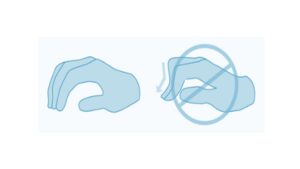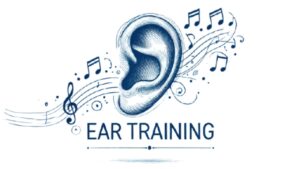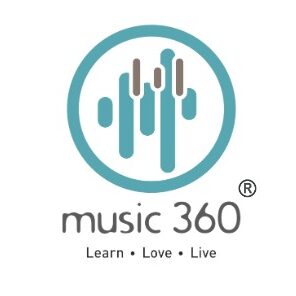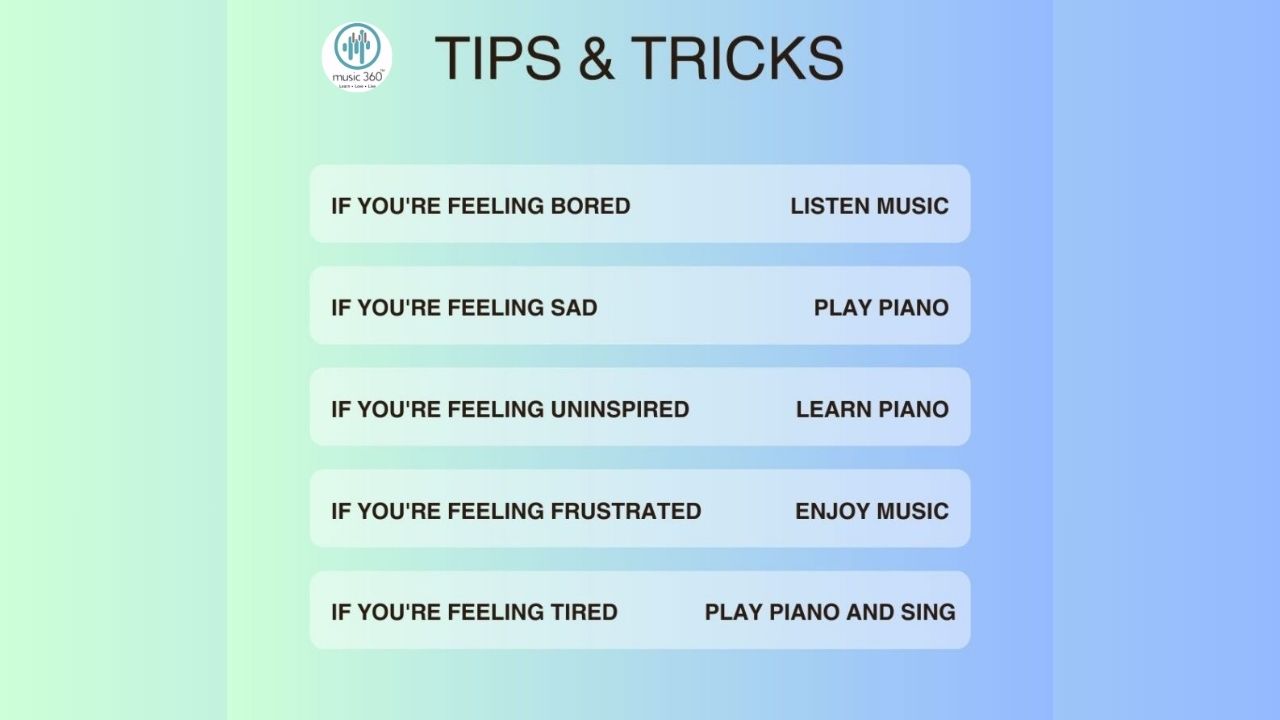Table of contents
- Introduction
- Start with the fundamentals: familiarize yourself with the piano keyboard
- Proper hand positioning
- Acquaint yourself with music theory
- Enhance your listening skills: learn to play by ear
- Get the hang of basic rhythms and timing
- Create a fixed practice schedule
- Learning to read sheet music
- Working on hand coordination
- Regular practice using the metronome and slow-speed practice
- Have fun and keep that spark alive
Introduction
Being a pianist is fun, but sometimes it is also difficult. If you play the piano recreationally in your daily routine or you become an expert in it, it might look difficult without making good plans. In this guide, I will provide 10 tips that every new pianist should remember in order to learn better and more enjoyably.
1. Start with the Fundamentals: Familiarize Yourself with the Piano Keyboard
Understanding how the piano is constructed is the key to take prior to playing anything else. Because this is such an important beginning, most students prefer to bypass songs, and thus it becomes difficult to enjoy the process.
Step By Step Way
- Piano Keys: The piano has 88 keys. There are 36 black and 52 white keys. White keys are labeled with the first seven letters of the alphabet: A, B, C, D, E, F, and G. When you press the G key, you return to A and can resume playing the cycle.
2. Proper Hand Positioning
Having your hands in the correct position is important not to get hurt and get a smooth stroke. If your hands are in the wrong position, tension and additional stress will cause you pain and inhibit your progress.

Easy Steps:
- Relax Your Hands: Sit easily at the piano and allow your hands to relax. Keep your fingers curled in their natural claw or soft “C” shape.
- Thumb Position: Position your thumb on the white keys with the fleshy part of your thumb on the key and not the tip. Your thumb is bent slightly and pointing towards the keyboard.
- Finger Curvature: Curve your fingers as if they were grasping a small ball. Play the keys with your fingertips, not with the flats or tips of your fingers.
- Elbow Height: Keep your arms and shoulders relaxed and your elbows level with the keys.
Tips:
- Incorporate hand workouts into your everyday routine to increase strength and flexibility. Relax your wrists and avoid riding too high or too low.
3. Acquaint Yourself with Music Theory
Knowledge of music theory is essential if you want to be a great pianist. Although you don’t need to be an expert, mastering the basics—rhythm, intervals, scales, and chords—will help you become a better musician and feel more comfortable playing the piano.
Step-by-Step Process:
- Scales: Begin with playing major and minor scales, which serve as the foundation for the bulk of compositions. Begin with playing the C major scale, which only employs the white keys.
- Chords: Start with the fundamental triads, then go on to three-note chords, and finally major and minor chords. Experiment with playing the chords in various inversions or rearranging the notes.
- Intervals: Learn the interval between two notes (e.g., a third, fifth, or octave), as this can help you while playing chords and melodies.
- Rhythm: Practice counting beats, reading time signatures, and recognizing different note durations (such as quarter and half notes).
Tips:
- Practice the scales and chords in various keys to become familiar with the keyboard.
- You may want to invest in some theory books or take online courses to learn more.
4. Enhance Your Listening Skills: Learn to Play by Ear
Learning your musical ear is an asset for musicians. Playing by ear is listening to a song and being able to play it on the piano without sheet music.

Step by Step: How to Do It
- Start Simple: Play songs that you know. Focus on one note or chord and try to play it on the piano.
- Practice intervals: When you play intervals, listen and observe how they sound different. For instance, a third sounds “happy” or “bright,” whereas a fifth sounds fuller and stronger.
- Practice Simple Tunes: Sing a song without referring to music sheets. Listen to determine the first note, then figure out the rest of the song.
- Write Songs by Ear: Play a brief part of a song, stop, and attempt to play it by ear. Next, attempt longer parts.
Helpful Hints:
- Utilize software and apps that assist in training your ear by providing you with interval recognition and chord progressions to practice.
- Start with easy songs and gradually make them tough as you go up.
5. Get the Hang of Basic Rhythms and Timing
It is all about your rhythm and timing to play the piano well. If your rhythm is not good, your playing will be jumbled, even though you play all the right notes.
Step-by-Step Process
- Clap It Out: Begin by clapping the rhythm of different notes to observe how rhythms function.
- Use a Metronome: A metronome provides you with a consistent beat to practice rhythm and timing on. Practice at slow tempos first and then proceed to faster tempos as you gain more confidence.
- Play Simple Tunes: Once you have mastered basic rhythms, play along with simple songs or exercises. Pay attention to staying in time with the music.
Tips:
- Practice slowly. It is more important to play accurately than to play quickly.
- Start with simple rhythms and then gradually move towards more intricate patterns as you improve.
6. Create a Fixed Practice Schedule
Consistency is very crucial in piano learning. Proper practice routine assists you in improving efficiently and effectively. Short practice sessions daily are more effective than long practice sessions on a weekly basis.
Step-by-Step Solution:
- Choose a Daily Practice Time: Choose the same time every day to practice irrespective of whether you have 20–30 minutes. This daily practice builds muscle memory and self-discipline.
- Begin with a Warm-Up: Begin with a simple root chord progression or scale to warm you up. This gets your hands and your brain ready for your practice.
- Plan Your Session Objectives: Choose a single or double focus per session, such as learning a new song, getting better at a scale, or getting better at your timing.
- Practice in Small Parts: Divide a new song into small parts when you begin it. Practice each part separately before you try the whole song.
Tips:
- Record what you do in every practice. This will enable you to observe your progress and identify areas where you need to make adjustments.
- Experiment with other exercises during your practice, including playing scales, reading sheet music, and ear training, to improve as a player.
7. Learning to Read Sheet Music
Unlock the full potential of your music experience by mastering the reading of sheet music. This is helpful in playing complex songs and expanding your library of music. It is hard to do at first, but note reading is essential for any keyboard player.
Step by Step: How to Do It
- Learn the Grand Staff: The piano has two staffs of notes: the treble clef for high notes and the bass clef for low notes.
- Know Your Notes: Learn the note names on the lines. Begin with the right-hand treble notes and the left-hand bass notes.
- Learn Key Signatures: Learn key signatures so that you will be able to recognize the sharps and flats of a tune.
- Improve Your Sight-Reading: Practice simple songs sight-reading to become faster and more accurate at reading notes.
Tips:
- Begin with easy sight-reading books to practice simple songs. If you practice reading songs, practice at a slow tempo. Ensure you play the correct notes and maintain your hands in the correct coordination.
8. Working on Hand Coordination
It is extremely hard to get the two hands cooperating when playing the piano. If you are a beginner, it is actually extremely essential to help your hands learn to move independently.
Here’s How to Do It:
- Begin with Simple Songs: Select a song where each hand plays a different beat or moves independently. Practice the hands separately, and afterwards, play them together.
- Hands Crossing Paths: Start with exercises where your hands have to switch positions (think scales) and gradually incorporate that into more complicated tunes.
- Give Both Hands Equal Chance: Ensure that you give both hands an equal amount of workout time so that they become accustomed to working together. Avoid favoring one hand over the other.
Quick Tips:
- Practice isolated sections for one hand at a time when sticky bits happen.
- Play songs slowly, using more complicated hand movements together.
9. Regular practice using the metronome and slow-speed practice.
Do you enjoy hearing songs fast? Wait a moment! You need to begin slowly and little by little, particularly in the beginning.
One Thing at a Time Guide
- Metronome is Your Buddy: Get going at a chill pace with your metronome buddy to make sure you’re keeping the beat and nailing each note.
- Ease Off the Gas: Do you need to practice a new song? Begin slowly and make sure you’ve got the finger placement and rhythm nailed.
- Ramp It Up Bit by Bit: Got the snail pace down? Excellent! You can now begin to pick up the speed a notch at a time.
Useful Tips:
- Slow down with difficult parts. It gets you more comfortable with precision and hand movement.
- Make sure it sounds good instead of playing quickly.
10. Have Fun and Keep That Spark Alive
Ultimately, remember that learning to play the piano is all about the journey, not the destination. Sometimes things will really be slow, but just stick with it and enjoy it, and you’ll improve. Keep your passion fire going and, you know, it’s alright if you need to take a break.
Step-by-Step Guide:
- Track Exciting Goals: Chase the excitement of learning a new favorite song. Small wins along the way boost your drive.
- Write Down Your Progress: Record your performances and listen back to them in order to check on how you have progressed.
- Join Other Pianists: Search for online piano forums, share what you’ve done, and listen in on others. It gets you pumped up and encourages you to keep going.
Recommendations:
Be gentle with yourself. You can’t transform overnight but remember that with each practice you are nearer to where you need to be. Make a big deal of little victories, whether it’s acing your first song from beginning to end mastering a difficult scale or improving with rhythm.

